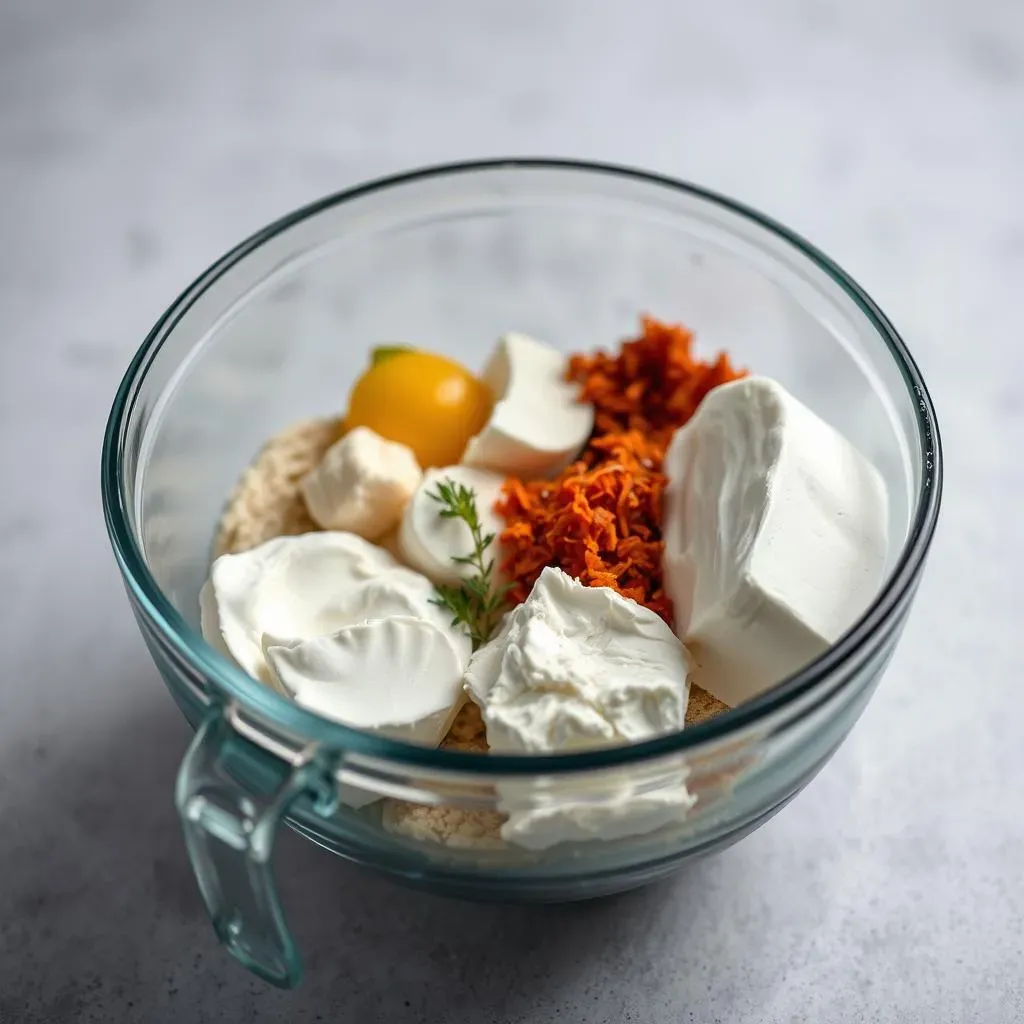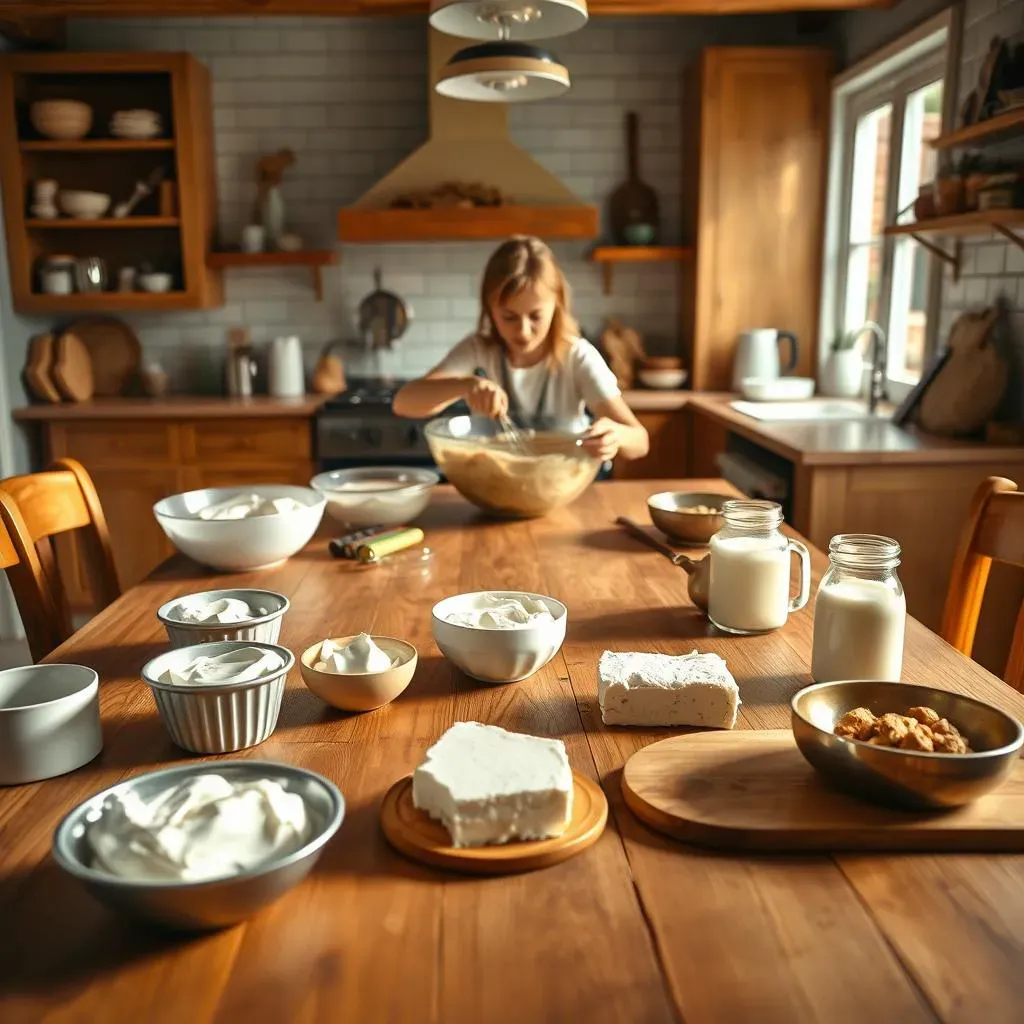Table of Contents
Ever found yourself mid-recipe, reaching for that crucial dollop of sour cream, only to discover an empty container? I've been there, staring into the fridge like it holds the secrets of the universe. Sour cream is a baking superstar, adding that perfect tang and moisture to everything from cakes to dips. But what happens when it's MIA? Don't panic! This article is your guide to the best substitutes for sour cream in baking. We'll explore why sour cream is so important, then dive into ten fantastic alternatives that'll save your culinary creations. Whether you're out of sour cream, dairy-free, or just curious, you'll find the perfect swap here. Get ready to bake without limits!
Why Sour Cream is a Baking MVP

Why Sour Cream is a Baking MVP
The Tangy Secret Weapon
Okay, so why is sour cream such a big deal in baking? It's not just some random dairy product we throw in. That tangy flavor? It's lactic acid doing its magic, and it adds a depth to baked goods that's just irresistible. It's like a tiny flavor bomb that makes everything taste a little more complex and interesting. Think about it: a plain vanilla cake versus a vanilla cake with a hint of sour cream. The difference is huge!
But it's not all about taste. Sour cream is also a texture wizard. That thickness? It adds moisture to your batters and doughs, preventing them from becoming dry and crumbly. It's the secret to that super soft, melt-in-your-mouth texture that we all crave. It also tenderizes proteins and relaxes gluten, which is why it's a must-have in recipes where you want a light, airy result.
More Than Just Flavor and Texture
Beyond the flavor and feel, sour cream is like a baking superhero in disguise. It helps your baked goods rise, thanks to its acidity reacting with leavening agents like baking soda. This reaction creates air bubbles, giving your cakes and muffins that lovely lift. That's why so many cake recipes include it, and it's why you can't just swap it out for any old thing. Its high-fat content also adds richness, making your baked goods taste more decadent. It’s a triple threat: flavor, texture, and structure!
I remember once I tried to make a cake without sour cream because I had run out, and I was too lazy to go to the store. Let me tell you, it was a disaster. The cake was dry, dense, and completely lacked that moistness I always expect. It was a hard lesson learned, and it made me realize just how important sour cream is for baking. After that, I always made sure to have some on hand.
Benefit | How It Helps | Example |
|---|---|---|
Tangy Flavor | Adds depth and complexity | Lemon Sour Cream Cake |
Moisture | Prevents dryness, creates soft texture | Moist Chocolate Muffins |
Tenderizes | Relaxes gluten, tenderizes proteins | Light and Fluffy Scones |
Leavening | Reacts with baking soda, helps rise | Tall, airy cupcakes |
Richness | Adds richness and decadence | Rich Pound cake |
Top 10 Substitutes for Sour Cream in Baking

Top 10 Substitutes for Sour Cream in Baking
Greek Yogurt: The All-Star Substitute
Okay, let's kick things off with the MVP of sour cream substitutes: Greek yogurt. Seriously, this stuff is a game-changer. It’s thick, tangy, and has a very similar consistency to sour cream, making it a perfect 1:1 swap in most baking recipes. You can use it in cakes, muffins, dips, or even as a topping for your favorite dishes. Plus, it’s packed with protein and lower in fat than sour cream, so it’s a win-win. Just make sure you go for the plain, full-fat version for the best results. Low-fat or non-fat yogurt will work, but you might lose some of that richness.
I’ve used Greek yogurt in so many recipes, and honestly, most people can’t even tell the difference. One time, I made a batch of lemon muffins using Greek yogurt instead of sour cream, and they turned out so moist and fluffy. My friends were raving about them, and I just smiled, knowing my secret weapon was just good ol' yogurt. It's so versatile; it's basically a baking cheat code.
Cream Cheese and Mascarpone: The Rich Relatives
Next up, we have the rich and decadent cousins: cream cheese and mascarpone. These cheeses are fantastic substitutes when you want to add a little extra oomph to your baked goods. Both are super creamy and provide a luscious texture that's similar to sour cream. For a 1:1 swap, it's best to soften them at room temperature and whisk in a bit of milk or lemon juice to get a consistency that’s close to sour cream. This helps them blend smoothly into your batter. Mascarpone, with its higher fat content, will give you an even richer result, while cream cheese brings its own unique tang.
I've found that mascarpone works especially well in dense cakes and frostings, while cream cheese is great in things like cheesecakes or pound cakes. They add such a lovely depth of flavor and make your baked goods taste incredibly luxurious. If you're looking to impress, these are your go-to alternatives.
Substitute | Best Use | Notes |
|---|---|---|
Greek Yogurt | Cakes, Muffins, Dips | Use plain, full-fat for best results |
Cream Cheese | Cheesecakes, Pound Cakes | Soften and thin with milk or lemon juice |
Mascarpone | Dense Cakes, Frostings | Rich and creamy, higher fat content |
Other Fantastic Options
Let’s not forget about the other amazing options you might already have in your kitchen. Buttermilk, for instance, is a great liquid substitute. It has a similar tang to sour cream and works wonders in pancakes, biscuits, and quick breads. For every cup of sour cream, use one cup of buttermilk. You can also try crème fraîche, which is like a richer, less tangy version of sour cream. It’s amazing in things like scones or savory bakes. And if you’re feeling adventurous, try using full-fat coconut milk mixed with a tablespoon of lemon juice or vinegar for a dairy-free alternative. It’s surprisingly good in cakes and muffins!
Then there's also ricotta cheese; it might be the least similar, but it works in a pinch! You can also use Kefir, Mexican crema, and even cottage cheese blended until smooth. Each of these options brings something unique to the table, so it's worth experimenting to see what you like best. The key is to consider the texture and flavor you're going for and choose the substitute that best fits your needs. Baking should be fun, so don't be afraid to try new things!
How to Choose the Right Sour Cream Substitute

How to Choose the Right Sour Cream Substitute
Consider the Recipe's Needs
Okay, so you've got all these awesome substitutes, but how do you pick the right one? First, think about what the recipe is asking for. Is it a delicate cake that needs a light touch, or a hearty casserole that can handle something richer? For lighter recipes, like muffins or quick breads, Greek yogurt is usually your best bet. It's got a similar tang and moisture content, and it won't weigh things down. If you're making something denser, like a chocolate cake, you might want to go for cream cheese or mascarpone. They’ll add that extra richness you want, but remember to thin them out a bit with milk or lemon juice, so they blend well.
Also, consider the flavor profile. If the recipe already has a lot of tang, you might want to avoid substitutes that add too much extra acidity. Crème fraîche or even a bit of heavy cream could be a better choice in those cases. It's all about balancing the flavors and textures to get the best results. It might seem like a lot to think about, but once you get the hang of it, it becomes second nature. And hey, even if you don't get it perfect the first time, it's still going to taste good!
Texture and Flavor are Key
Texture is just as important as flavor when you're choosing a sour cream substitute. You wouldn't use a watery substitute in a recipe that needs a thick, creamy base, right? That's why Greek yogurt is so great; it’s thick enough to mimic the texture of sour cream in most situations. If you're using something like buttermilk, remember that it's much thinner, so you might need to adjust the amount of other liquids in your recipe. On the other hand, if you’re using something like cream cheese or mascarpone, which are super thick, you'll definitely need to thin them out to match the consistency of sour cream.
And let’s talk about flavor! Sour cream has that distinct tang, which comes from lactic acid. If you’re using a substitute that doesn’t have that same tang, you might need to add a little lemon juice or vinegar to compensate. This is especially true when using substitutes like heavy cream or coconut milk. It's also wise to taste your batter or dough before baking to make sure the flavor is where you want it to be. Don’t be afraid to experiment a little; that’s where the real fun in baking is!
Substitute | Texture | Flavor | When to Use |
|---|---|---|---|
Greek Yogurt | Thick and creamy | Tangy | Most recipes, especially lighter ones |
Cream Cheese | Thick and dense | Tangy and rich | Dense cakes, cheesecakes |
Mascarpone | Very thick and creamy | Rich and mild | Dense cakes, frostings |
Buttermilk | Thin and liquid | Tangy | Pancakes, biscuits, quick breads |
Crème Fraîche | Thick and creamy | Mild and slightly tangy | Scones, savory bakes |
Coconut Milk (full fat) | Thick and creamy | Slightly sweet, needs acid | Dairy-free baking |
Don't Be Afraid to Experiment
Ultimately, baking is all about having fun and being creative, so don't be afraid to experiment with different sour cream substitutes. Sometimes, the best discoveries are made when you step outside the box. Try mixing different substitutes together to see how it impacts the recipe. For example, you could try a blend of Greek yogurt and a little bit of cream cheese for a richer flavor, or a mix of buttermilk and yogurt for a lighter result. The possibilities are endless!
Remember, the goal is to find a substitute that works best for *you* and your taste preferences. There is no one-size-fits-all answer, so it's important to be flexible and willing to try new things. And if you make a mistake? No big deal! That's part of the learning process. Just try again and keep experimenting until you find the perfect swap. Baking should be an adventure, so embrace the journey and enjoy every delicious moment.